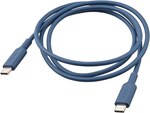these are quality cables. I would rate them above Ugreen and even Anker and at $4.50 each it makes them similarly priced.
$5 shipping is reasonable.
cable spec only says 3A but can confirm this is standard 3A USB-C spec which means 20V/60w max. data is 480mbps/USB2.0.
if anything to be critical about, I find the plastic surrounding the USB-C plug is like 1mm thicker than average. so it might have problems fitting through some phone/tablet cases. an easy way to tell is plug the stock included (apple/samsung whatever) cable into your current phone with case, if there is zero gap between the plug and case then you might have issues. if there is a gap then should be fine.


Do they have any HDMI splitters for sale?